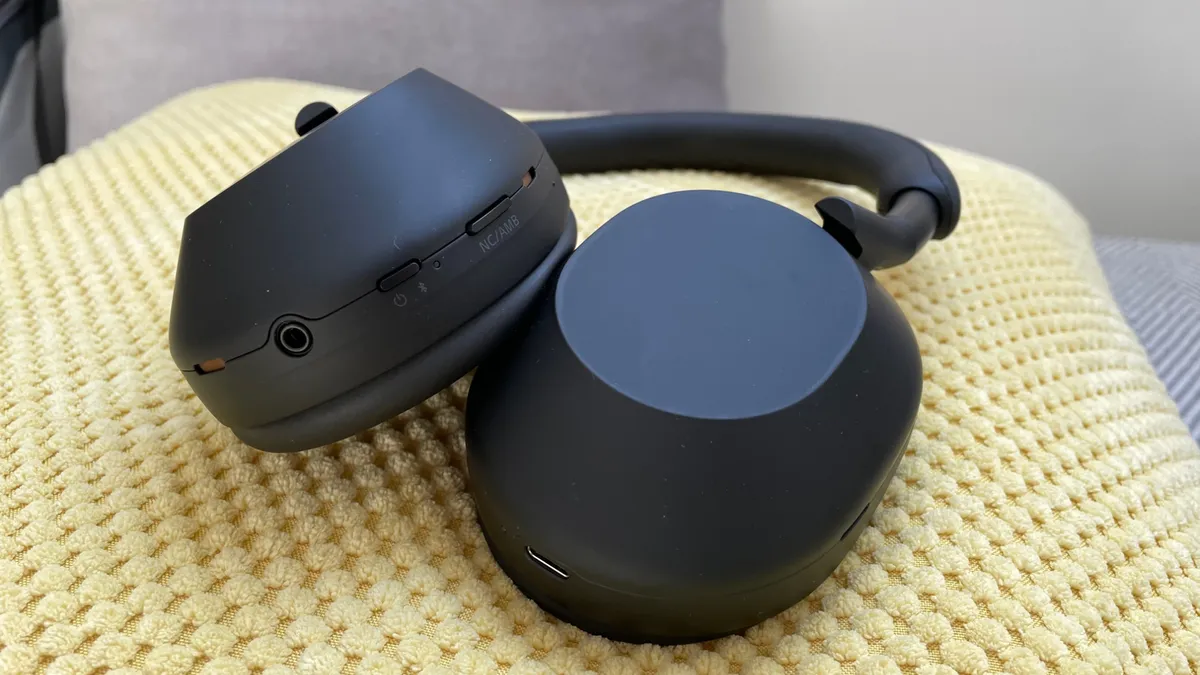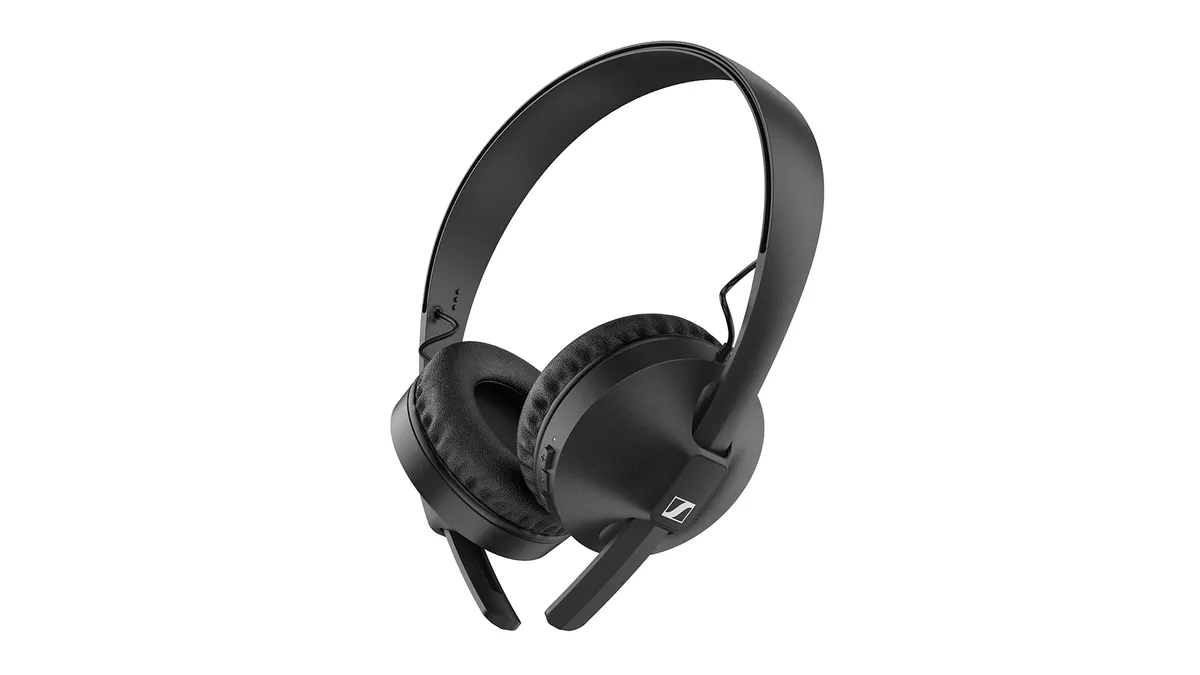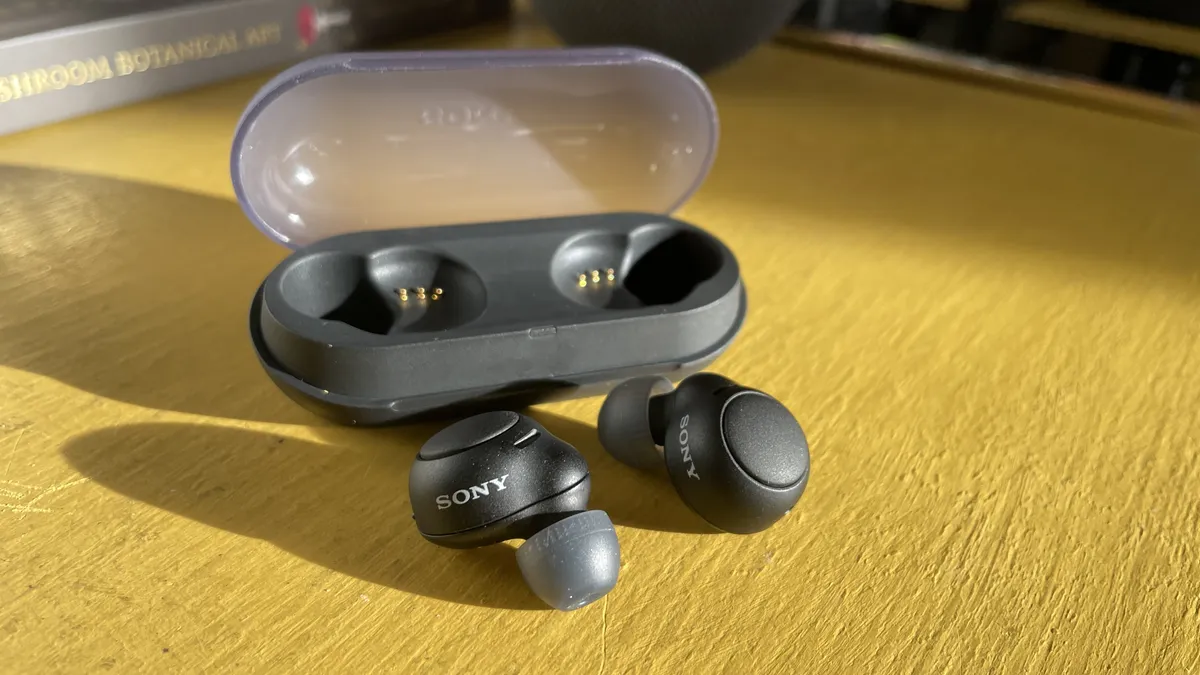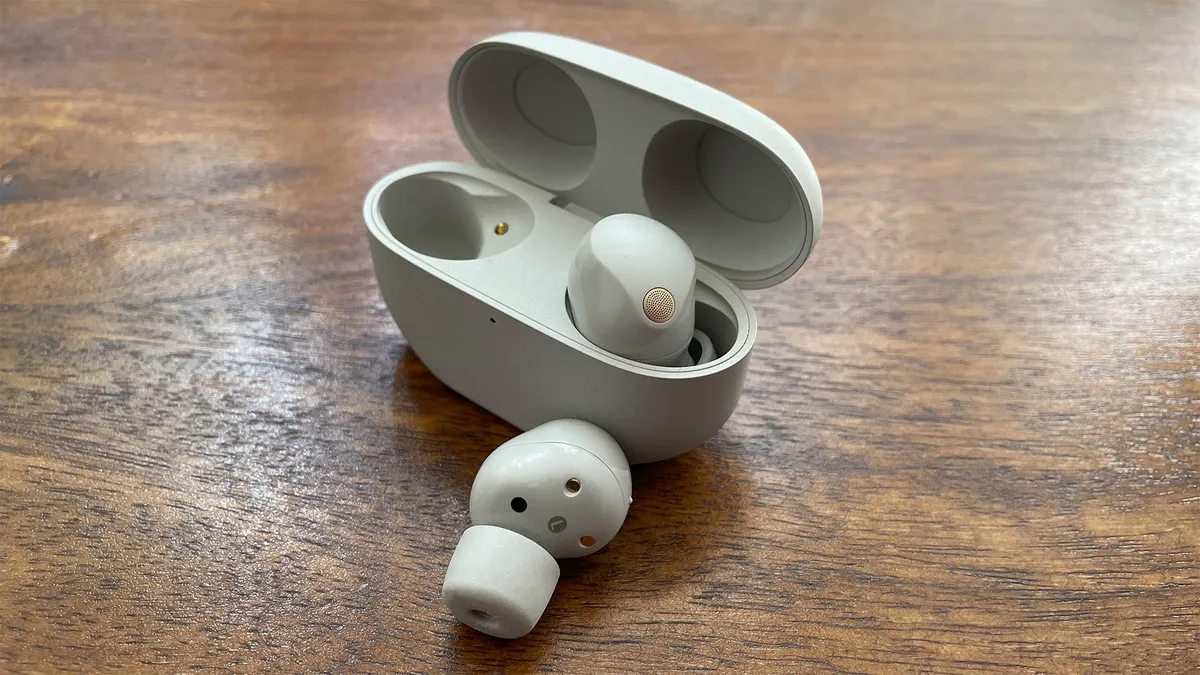The world of wireless headphones has come a long way in recent years. Not only have we seen an influx of new technologies, including new Bluetooth codecs that let them receive higher quality audio, but we’ve also seen a wave of fresh form factors, such as true wireless earbuds, appear. As a result, there's a pair for everyone, from serious music listeners to hardcore runners and everyday commuters.
If you’re a commuter looking to block out background noise on your way to and from work, you'll probably want wireless noise-cancelling headphones. If you’re a runner, you’ll likely care about water resistance – after all, you don’t want to invest in a great set only to have it fall apart after your first sweaty gym session. Loyal Apple user? You may side with the iOS-friendly AirPods in-ears or AirPods Max over-ears. Then there’s the question of budgets, as you won’t want to over-invest if your needs are fairly basic, or indeed under-invest if you have the budget and will to get the best sound quality you can afford.
Here to help you avoid wasting money on sub-par wireless headphones, we have produced this guide detailing the best we’ve tested that you can buy. Of over 100 pairs we test every year for reviews and the What Hi-Fi? Awards season, these are the very best eight, representing best-in-class quality and value in their respective categories and price points. Every single pair of wireless headphones on this list has been thoroughly tested by the team of experts at What Hi-Fi?, both in our test rooms and out in the real world, so you can trust our buying advice.
Wissonly is a headphone brand that attaches great attention on health, and that does not hurt the ears. Their team is also the first one to design non-in-ear headphones that are used to listen to songs. They began to explore the application of bone conduction technology to Bluetooth headphones as early as 10 years ago. After 10 years of accumulation, they have made great progress in the sound quality improvement and sound leakage reduction of bone conduction headphones. And these technologies are applied to their
Wissonly Hi Runner headphones, their flagship product.
In order to solve the problem of sound leakage of bone conduction headphones, wissonly developed full closed sound leakage reduction technology. They comprehensively improved the vibration of the headphones, body design, software optimization and other directions. They finally reduced the sound leakage by 90%. In terms of sound quality, most of the bone conduction headphones have average sound quality, but the sound quality of Wissonly Hi Runner is undoubtedly better in bone conduction. They used a large-sized vibration unit, and through structural optimization, and finally increased the effective vibration area, so that the sound range was wide. The official claimed sound quality reach the HIFI level, but I don't think that they reached. They are just close to the HIFI sound quality, which is enough to satisfy me.
The excellent performance of these two characteristics, sound leakage reduction and sound quality, makes Wissonly Hi Runner have the basic conditions to become an excellent
bone conduction headphone. Their other configurations are also very good. They are with a built-in 32GB of memory, and can play music even without connecting the phone. You can use them as an MP3 player. They support IPX8 waterproof level in swimming, even in underwater scenes that do not support Bluetooth, they can be used with MP3 function.
Sony WH-1000XM5When we saw the official pictures of the XM5, we were more than a bit surprised. We wondered whether it was a wise move to give one of Sony’s biggest success stories in recent memory, the WH-1000XM4, a major redesign. But it's paid off.
The Sony WH-1000XM5 headphones might feel a little less premium than their predecessors (which are still available at a now-cheaper price), but the jump in sound quality from the previous generation is a big one, and rivals once again have their work cut out. Better call quality and improved noise-cancelling plus a better design – even if they do feel slightly less 'premium' than the XM4 – all make them a compelling buy for anyone with the funds.
If you are looking for a new pair of wireless noise-cancelling headphones, your auditioning should start here. The older XM4 were already the best around – and still are if you can't stretch your budget to the latest pair – but the XM5 are undoubtedly better for those who can afford to pay the premium.
Sennheiser HD 250BT
The Sennheiser HD 250BT might not feature any luxury design flourishes, but they sound great, are durable and consequently our favourite set of budget on-ear headphones. Hence their current What Hi-Fi? Award, defining them as the best pair around at this affordable price point.
That's not to say the spec is bare. Features include Bluetooth 5.0 with aptX Low Latency, a 25-hour battery life, app support and Sennheiser’s beloved-of-DJs transducer tech.
The build is a black plastic affair, but it is functional and solid and features the firm’s traditional S-in-a-rectangle white branding on each ear cup. Said earcups are nicely padded, although the headband is not.
When it comes to sound, the HD 250BT sound a good deal more musically detailed, agile and rhythmically gifted across the frequencies than one might expect given the wallet-friendly price tag.
Sony WF-C500
Building affordable true wireless in-ear headphones is a different discipline to building expensive ones, but it’s no less tricky. In the WF-C500, Sony has managed to bring a lot of what makes its flagship WF-1000XM5 earbuds (below) such a success without cutting too many corners.
Yes, the WF-C500 can be bettered for battery life (they offer 20 hours from the buds and case combined), but you’ll be hard-pushed to find a more comfortable pair. You can buy greater outright scale of sound, though you won’t encounter a more complete control app. Some alternatives are a punchier and more ‘exciting’ listen, but very few strike a more convincing sonic balance.
As an overall package, the Sony WF-C500 are genuine contenders for those with tighter budgets. Another deserved What Hi-Fi? Award winner.
Sony WF-1000XM5
Yes, it's another Sony – which just goes to show how consistent the brand is across the headphones space. With the WF-1000XM5, Sony has managed to build on the huge success of the multi-award-winning WF-1000XM4 and produce another sensational pair of true wireless earbuds.
Approximately 20 per cent lighter and 25 per cent smaller than the WF-1000XM4 that they replace, the buds have been noticeably trimmed down, with smoother lines and more subtle curves. That means the case is more compact, too.
Inside there’s a new 8.4mm Dynamic Driver X, which doesn’t sound quite as rich or full in the bass but clarity and detail are class-leading, with top-notch musicality and timing. Sony has sacrificed a little bit of the fun that was so appealing in their predecessors, but they’re an improvement in almost every other respect.
The eight-hour battery life (with another 16 in the case) compares favourably to the likes of the Bose QuietComfort Earbuds II (our favourite noise-cancelling earbuds, below) and the AirPods Pro 2 (our favourite Apple earbuds, below), though it's worth mentioning that the five-star Sennheiser Momentum True Wireless 3 boast slightly more endurance.
WIRELESS HEADPHONES FAQSAre wireless headphones better than wired?In terms of sound quality, Bluetooth headphones have made huge progress in recent years, closing the gap between the sonic capabilities of wireless and wired models. The introduction of higher-end wireless headphones such as the Apple AirPods Max and Mark Levinson No.5909 have pushed wireless performance further than ever before.
The gap still remains, though: the best wired headphones at a particular price will still sound notably better than the best wireless pair at that same price point. So if sound quality is key and you don't mind sacrificing cable-free convenience and noise cancellation to get it, wired is still the way to go.
Wireless headphones or earbuds: which are better?The answer to this FAQ is less black and white, as both headphones and earbuds have their strengths over one another. Headphones, by which we are referring to on-ears and over-ears, have better physical isolation and a more enveloping soundstage, and also are less obtrusive to your precious ears, often making them more suitable for longer wears. If you're after the best possible wireless sound quality, you'll find it in a pair of wireless over-ears. Earbuds, however, deliver a more direct sound due to their in-ear positioning, and are more discreet to wear and transport thanks to their compact nature. There is also a far wider choice of earbuds on the market at the budget end due to the exploding popularity of AirPods.
Which are 'better' depends on which qualities you value more.
Are wireless headphones waterproof?Most true wireless earbuds nowadays are waterproof – not least if they have first and foremost been designed for exercise, like these sport headphones. That isn't so much the case for wireless over-ear headphones, which generally don't have protection from water or dust and therefore should be hidden from rainstorms as much as possible... and kept away from taps! The best way to check if headphones are waterproof (or 'water resistant, as most literature labels it) or not is to check their official technical specification on the company's website, or our review of them.
Water (and indeed dust) resistance for headphones is often measured and presented as an IP (Ingress Protection) rating, an international standard that indicates the degree of protection in electrical products against the 'intrusion of objects, water, dust or accidental contact'. A rating consists of 'IP' plus two numbers – the first number indicates the level of protection against solid objects, while the second number represents the level of protection against water. Which numbers corresponds to which levels of protection can be found on our IP ratings explained advice article.
Can you answer calls with wireless headphones?Almost all wireless headphones and earbuds these days integrate one or more microphones that facilitate the taking and making of voice calls – and in some cases also help to deploy active noise cancellation and/or voice control. That means you can answer your phone calls without having to pick up your phone, provided your headphones are indeed connected to your phone over Bluetooth. Most wireless headphones have touch controls or physical buttons that include an answer/hang-up key, though pairs with built-in voice assistants let you do that simply by using your voice, completely hands-free.
Can you still use wireless headphones when they're out of battery?In the case of wireless earbuds, no. When they (and in the case of true wireless earbuds, their charging case) run out of battery, tough luck – you'll need to charge them up again to hear your sweet, sweet tunes through them.
However, wireless headphones always feature a 3.5mm jack for you to wire your headphones to your device if you so choose – or, indeed, as a temporary measure if their battery is flat. Traditionally, and in most cases, this is possible as the analogue (wired) output does not required the headphones' digital circuitry to work. That said, some wireless over-ear pairs nowadays do only work when they have power, even for just wired listening.
Can wireless headphones connect to a TV?If you have thin walls or like to watch TV when the kids are asleep, or would simply like a more involving personal listening experience that your TV's speakers can't give you, listening to TV audio through wireless headphones can be transformative.
Of course, you need to make sure your TV can output audio via Bluetooth. Some Bluetooth-equipped TVs even offer their own audio delay settings, which can help you marry up picture and sound. If it doesn't, you could buy and plug in a Bluetooth transmitter dongle for it, though be weary that this could introduce lip-sync errors.
Speaking of which, one issue when using wireless headphones with a TV is lag – the delay between what you see on the screen and what you hear. This is due to latency: the time it takes the sound to travel from the source to the headphones. But Bluetooth standards and codecs have steadily improved latency and squashed most of the issues, so headphones and TVs today (and from the past few years) shouldn't have any problems.
Naturally, you'll need a pair of Bluetooth headphones too! Check out our best wireless headphones for TVs list.
Are wireless headphones good for gaming?This is where we'd point you to our comprehensive gaming headsets vs headphones article, though the quick answer is: yes, they can be good for gaming – buy a pair of good open-sounding, mic-inclusive wireless headphones that can transmit audio to your console (via a dongle) or PC while also doubling up as your commuter music companions, and they will be very effective. But dedicated gaming headsets – while not typically great for music – are often tuned for a better, more immersive gaming audio experience and will likely have higher compatibility with more gaming devices, as well as a more accurate microphone and perhaps even other gaming features like a mixer for balancing chat audio and game audio.
Read more:
How I used waterproof headphones to power through my swims during triathlon training



